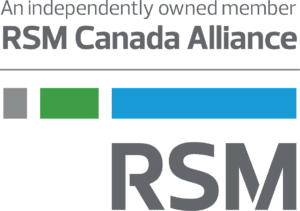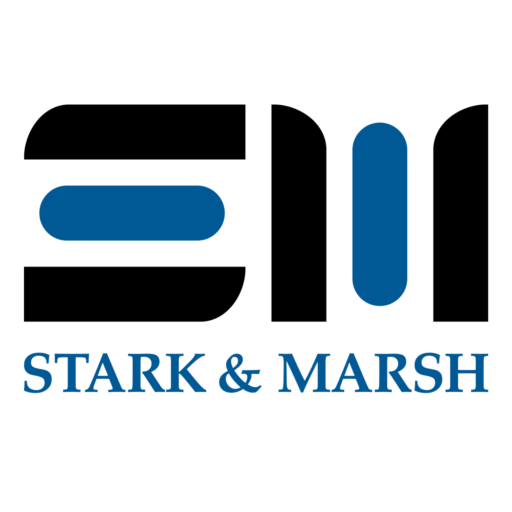RESOURCE
How and why farm partnerships may work for your farming business
ARTICLE | August 29, 2021
Authored by RSM Canada
A farm partnership is a potentially beneficial tax structure that can be used effectively for tax planning purposes. While corporations can also be partners, this article concentrates on partnerships between individuals. There needs to be a business carried on by two or more people, related or non-related, with the shared goal of making a profit before a partnership can exist.
How to set up a partnership
Begin with a partnership agreement, which defines all partners, specifies governance and operations, outlines how profits are to be disbursed and provides details regarding a partner’s death or departure from the partnership. Oftentimes taxpayers, especially spouses, file income tax returns as a partnership yet they do not have an official partnership agreement. The agreement is an important document as it takes care of matters that may arise during the partnership. It also helps provide validation should the Canada Revenue Agency (CRA) question information on the return.
Before beginning operations and transferring assets, register the partnership for GST/HST.
Pay close attention before adding a new partner, if you previously have been farming alone for many years. You will need to transfer your individual farming assets to the partnership by using an election under the Income Tax Act to benefit from a tax deferral. Without this step, the CRA may view that you have sold your farming assets at fair market value, which will lead to a significant tax bill.
Farm partnership incorporation
Typically, where the capital gains deduction is concerned, we may think of its utility when farmland is sold or when shares in a farm corporation are sold. A beneficial tax planning opportunity also exists where farm partnerships are concerned. Partners can sell their partnership interest to a corporation and employ their capital gains deduction, assuming the partnership interest is eligible. This strategy assists farmers in transferring assets such as farm equipment or inventory at fair market value while recouping a tax-free promissory note from the corporation.
As an example, consider farmers Mr. and Mrs. Cattleman have a farm partnership. The following outlines their assets and liabilities at fair market value:
| Grain and feed | $400,000 |
| Cattle | $1,000,000 |
| Equipment | $900,000 |
| Total assets | $ 2,300,000 |
| Less debt on equipment | ($300,000) |
| Value of partnership | $2,000,000 |
Both Mr. and Mrs. Cattleman have a partnership interest worth $1,000,000, as well as their entire capital gains deduction in the amount of $1,000,000. When Mr. and Mrs. Cattleman sell their partnership interests to the corporation, they can offset the capital gain from this sale with their deductions and recover promissory notes from the corporation in the amount of $1,000,000 each. With the corporation as the sole partner, the partnership effectively ends and so long as the corporation perpetuates the farming business, all assets and liabilities will roll out on a tax-free basis. This allows them to sell their cattle, feed and grain at a reduced corporate tax rate and remove the after-tax dollars without paying any more tax.
How farm partnerships are taxed
Farm partnerships, where there is an individual as a partner, need to have a year-end of December 31 for income tax purposes and net income is determined at the partnership level. Income is then distributed between the partners on a method of allocation outlined in the partnership agreement. Capital cost allowance and adjustments to inventory (both optional and mandatory) are claimed at the partnership level before the income is disbursed.
As an example, in the farm partnership of Mr. and Mrs. Cattleman, they divide the income 60/40. Here are their revenue and expenses:
| Farm income | $500,000 |
| Farm expenses | ($300,000) |
| Capital cost allowance | ($50,000) |
| Net farming income | $150,000 |
| Mr. Cattleman’s share | $90,000 |
| Mrs. Cattleman’s share | $60,000 |
Bear in mind that the CRA may question the allocation. Be sure that the split is reasonable and reflective of how much capital has been invested and how much work has been performed. When you are calculating your partnership income, consider the following expenses:
- Salaries: Partners salaries are not deductible as expenses. Rather, these are viewed as a distribution of the partnership equity;
- Property taxes and mortgage interest: In the case of land owned by one or more partner, these amounts should not be expensed, assuming the partners intend to keep the land out of their partnership;
- Partners may claim expenses against their partnership income, once it has been allocated; these expenses may include individual ones that only one partner incurred.
As mentioned above in regards to the land costs, an effective strategy is for the partnership to rent land from one of the individual partners. If you choose this route, be sure to record income from the rental on a Statement of Real Estate Rentals. The statement needs to be reported on the partner’s personal income tax return. Both property taxes and interest can be deducted against income from rent. If the individual is registered, he or she will also need to charge and remit GST/HST.
How farm partnership interest is treated
For income tax purposes, ownership of an interest in a partnership is viewed as capital property. In cases where the partnership involves family members, the Income Tax Act permits some favourable treatment, as follows:
- Power to sell the partnership interest;
- Ability to shelter a capital gain with the capital gains deduction; or
- Ability to defer tax by applying the farm rollover rules and transferring the partnership interest to a child or grandchild.
As an example, Farmer Bushel and his son Kernel are in a farm partnership. Farmer Bushel decides he wants to retire from farming while Kernel wants to keep the farm going. Ms. Jane Deere, whom is Kernel’s spouse, is also deeply involved in the day-to-day operations of the farm. Under this section of the Income Tax Act, a daughter-in-law is viewed as a child; therefore, Farmer Bushel can reallocate his partnership interest to Jane with the accompanying taxes deferred and the farm partnership continuing to run with Jane and Kernel comprising the partnership.
Qualifying land for the capital gains deduction through a farm partnership
In certain cases, farmland may not be eligible for the capital gains deduction. As an example, perhaps the owner shows gross income from another source, which surpasses his or her income from farming. An effective way to qualify this land is to create a family farm partnership. Where the only source of income is farming income, the family farm partnership can work the land for two years, which in turn allows it to be eligible for the deduction, assuming that all other necessary qualification criteria have been met.
This article was originally published on November 1, 2018 and has been updated.
Questions?
Contact your trusted Stark & Marsh Advisor or an office close to you.
This article was written by Rob Fischer and originally appeared on Aug 29, 2021 RSM Canada, and is available online at https://rsmcanada.com/insights/industries/food-beverage/how-and-why-farm-partnerships-may-work-for-your-farming-business.html.
RSM Canada Alliance provides its members with access to resources of RSM Canada Operations ULC, RSM Canada LLP and certain of their affiliates (“RSM Canada”). RSM Canada Alliance member firms are separate and independent businesses and legal entities that are responsible for their own acts and omissions, and each are separate and independent from RSM Canada. RSM Canada LLP is the Canadian member firm of RSM International, a global network of independent audit, tax and consulting firms. Members of RSM Canada Alliance have access to RSM International resources through RSM Canada but are not member firms of RSM International. Visit rsmcanada.com/aboutus for more information regarding RSM Canada and RSM International. The RSM trademark is used under license by RSM Canada. RSM Canada Alliance products and services are proprietary to RSM Canada.

Stark & Marsh CPA LLP is a proud member of RSM Canada Alliance, a premier affiliation of independent accounting and consulting firms across North America. RSM Canada Alliance provides our firm with access to resources of RSM, the leading provider of audit, tax and consulting services focused on the middle market. RSM Canada LLP is a licensed CPA firm and the Canadian member of RSM International, a global network of independent audit, tax and consulting firms with more than 43,000 people in over 120 countries.
Our membership in RSM Canada Alliance has elevated our capabilities in the marketplace, helping to differentiate our firm from the competition while allowing us to maintain our independence and entrepreneurial culture. We have access to a valuable peer network of like-sized firms as well as a broad range of tools, expertise, and technical resources.
For more information on how Stark & Marsh CPA LLP can assist you, please call us at 306-773-7285.
